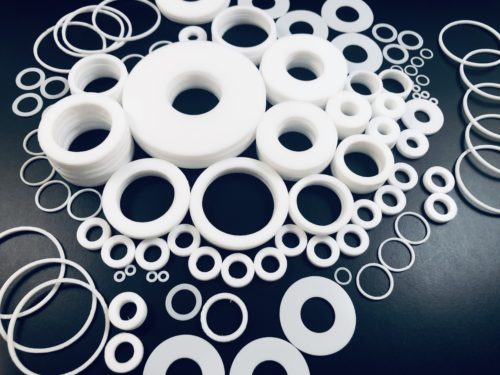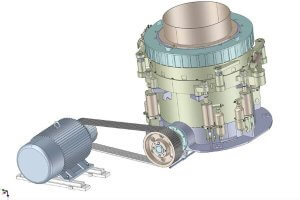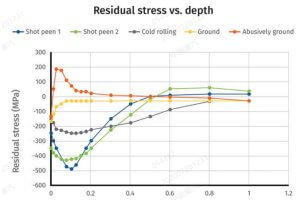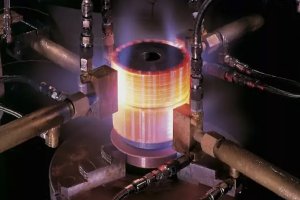Introduction to CNC Machining and Plastics
CNC machining stands for Computer Numerical Control machining, a manufacturing process where pre-programmed computer software dictates the movement of factory tools and machinery. This process allows for precise control over complex shapes and surface quality which is essential in diverse industries ranging from aerospace to medical devices. In this realm, plastic materials play a crucial role due to their versatility, light weight, and cost effectiveness. They are preferred in situations where metal’s heft or conductivity is undesirable, making plastics indispensable in creating intricate components such as insulators, gears, and high-precision bushings by utilizing the sophisticated capabilities of CNC machines.
Characteristics and Applications of ABS Plastic in CNC Machining
ABS (Acrylonitrile Butadiene Styrene) is a thermoplastic material renowned for its strength, flexibility, thermal stability, and impact resistance, making it an ideal candidate for CNC machining. This engineering plastic boasts excellent mechanical properties and can be easily machined to tight tolerances. It can also be treated with a variety of finishes, such as painting and bonding, facilitating enhanced aesthetic qualities or functional coatings. In CNC machining, ABS is commonly utilized to create prototypes due to its easy post-processing and assembly features. Practical applications of CNC-machined ABS parts span across various industries, including automotive components like dashboards and wheel covers, consumer electronics cases, toys, and medical devices—all benefiting from ABS’s versatility and durability.
Polycarbonate (PC) in CNC Machining
Polycarbonate is a thermoplastic that’s well-suited for CNC machining due to its unique properties such as high impact resistance, dimensional stability, and optical clarity. Its ability to withstand significant mechanical stress without deforming makes it ideal for creating robust components. Additionally, PC’s impressive thermal resistance up to about 280°F (138°C) allows for applications in environments subject to temperature variations. The material also exhibits excellent transparency, which can be crucial when manufacturing items requiring light transmission or visual inspection. Frequently machined polycarbonate products include protective equipment like bulletproof glass, industrial components such as machine guards, and medical devices where sanitation and non-reactivity are essential.
Polyethylene (PE) in CNC Machining
In the realm of CNC machining, polyethylene presents itself as a versatile and frequently utilized material, available in various forms such as High-Density Polyethylene (HDPE), Low-Density Polyethylene (LDPE), and Ultra-High Molecular Weight Polyethylene (UHMWPE). Each type offers distinct characteristics suitable for specific industrial applications; HDPE is known for its strength and rigidity, LDPE provides excellent ductility and low-temperature resistance, while UHMWPE stands out with exceptional abrasion resistance and self-lubricating properties. The advantages of using polyethylene materials include their resistance to moisture, chemicals, and impact, coupled with their ease of fabrication and comparatively low cost. These benefits make PE a popular choice for components like cutting boards, tanks, and bushings needed in sectors ranging from food processing to aerospace engineering.
Nylon’s Strengths in CNC Machining and its Industrial Applications
Nylon, or Polyamide (PA), is a robust thermoplastic material favored for CNC machining due to its excellent mechanical properties including strength, durability, and resistance to abrasion. It also showcases significant resilience against chemicals and wear which makes it highly suitable for creating precision components. Industrially, CNC-machined nylon parts are common in the automotive sector for under-the-hood applications, gears, bushings, and bearing surfaces where its ability to absorb shock loads and resist wear contributes to longer-lasting components. Additionally, its low friction coefficient aids in the manufacture of moving parts within industrial equipment, thus exemplifying nylon’s versatility across various manufacturing domains.
Unique Characteristics of PTFE
PTFE, commonly known by the brand name Teflon, is distinguished by its remarkable properties which include high chemical resistance, excellent thermal stability, and a low coefficient of friction. This combination makes it an ideal material for applications requiring minimal surface adhesion and smooth flow of substances. Its temperature tolerance ranges from -200°C to +260°C, allowing it to function in extreme conditions without degrading. Additionally, PTFE’s outstanding electrical insulation characteristics make it suitable for electronic components. A specific part made with PTFE would be a non-stick coating applied to cookware, contributing to effortless food release and ease of cleaning while being inert and stable at cooking temperatures.
PVC (Polyvinyl Chloride) in CNC Machining
Utilizing PVC, a versatile and cost-effective material, offers significant advantages in the realm of production. Its inherent chemical resistance, durability, and easy machinability make it an excellent choice for various industrial applications. PVC’s low thermal conductivity enhances its utility in electrical insulating components. In CNC machining, this plastic is favored for creating intricate parts since it can withstand numerous cycles without degradation. Diverse applications benefit from CNC-machined PVC components, including plumbing pipes, medical device parts, and electrical housings. An example is the manufacturing of complex valve assemblies used in water treatment plants where PVC’s corrosion resistance ensures long-lasting performance.
Acetal’s Machining Capabilities
Acetal, commonly known as Polyoxymethylene (POM), is a thermoplastic renowned for its excellent machining capabilities. This engineering plastic is characterized by its high strength, stiffness, and stability under mechanical stress, which makes it an exceptional candidate for precision components. Acetal can be intricately machined to tight tolerances and has a low coefficient of friction, paired with good wear properties. Its dimensional stability and resistance to deformation under load allow it to produce parts with consistently high accuracy. Additionally, acetal’s natural lubricity means that fabricated parts require less maintenance while operating smoothly over their lifetime.
Use of Acetal in Precision Mechanical Components
The physical characteristics of acetal make it highly suitable for creating precision mechanical components often employed in gears, bearings, electrical engineering insulators, and snap-fit assemblies. Due to its resilience against fatigue, creep resistance, and low moisture absorption, acetal ensures reliability and longevity where precise movement and high-performance are mandatory. For example, in automotive applications, acetal is used to manufacture fuel system components, door handle assemblies, and various fasteners—each exemplifying the material’s capability to function accurately under complex loads and environmental conditions.
PMMA (Polymethyl Methacrylate or Acrylic) in CNC Machining
PMMA, commonly known as acrylic, is a transparent thermoplastic with properties that make it ideal for CNC machining operations. It possesses excellent optical clarity, high tensile strength, and superior weather resistance, which are invaluable for creating intricate parts where aesthetics are crucial. In addition to these attributes, PMMA has good thermal stability and is easy to machine, allowing for precise cuts without the risk of cracking or melting during the process. These properties enable its widespread use in manufacturing lenses, light guides, and transparent covers where visual appeal must be matched with functionality. Moreover, due to its UV resistance and insulating traits, PMMA finds application in outdoor fixtures and electronic device screens, representing a fusion of both aesthetic and practical design requirements.
HDPE (High-Density Polyethylene) Durability and Wear Resistance
High-Density Polyethylene, or HDPE, is renowned for its exceptional durability and wear resistance which makes it a favorable choice in CNC machining productions. These characteristics enable the production of heavy-duty parts that can withstand rigorous conditions without significant degradation. As an example, HDPE’s toughness and resistance to impact are crucial attributes for components such as industrial gears and cutting boards used in commercial kitchens, where they endure constant friction and require minimal maintenance over their long service lives. This utility underscores HDPE’s role as a versatile material meeting diverse demands of strength and longevity in part fabrication.
PET (Polyethylene Terephthalate) in CNC Machining
Polyethylene Terephthalate, commonly known as PET, is a durable and highly versatile plastic material often selected for CNC machining due to its stability, high strength, and resistance to various chemicals. Important features of PET include its low moisture absorption and excellent dimensional stability which make it particularly suitable for precision components required in the packaging and engineering sectors. In the context of packaging, PET’s ability to withstand significant load and maintain clarity ensures long-lasting and aesthetically pleasing containers. Meanwhile, PET’s presence in the engineering field is marked by parts such as insulators and gears owing to its wear-resistance and good electrical insulation properties. These qualities collectively contribute to PET’s reputation as an essential polymer in both consumer-oriented and technical applications.
Conclusion
The array of plastic materials used in CNC machining underscores the remarkable adaptability and functionality inherent to each type. Acrylonitrile Butadiene Styrene (ABS) shines for its impressive impact resistance, while Polycarbonate offers exceptional strength and transparency. Polyethylene provides chemical resilience and low friction, whereas Polypropylene boasts a unique balance of toughness and flexibility suited for various applications. The high-performance attributes of PEEK are celebrated in advanced engineering scenarios, requiring superior thermal and chemical stability. Nylon’s durability and wear resistance make it indispensable in mechanical components that demand longevity. Acetal is favored for precision parts due to its dimensional stability and low moisture absorption. PMMA’s optical clarity caters brilliantly to aesthetic needs as well as functional designs. Lastly, PVC and PT FE extend this material spectrum further—PVC with its versatility and cost-effectiveness; PTFE featuring unparalleled non-stick properties and heat endurance. Together, these plastics play pivotal roles within modern manufacturing landscapes, defining an era where customization, efficiency, and innovation merge seamlessly through advancements in CNC technology.
Q&A Section: Characteristics of Plastic Materials in CNC Machining
In the realm of CNC machining, various plastic materials hold unique attributes catering to specific engineering requirements. For instance, Acetal (POM) is renowned for its high mechanical strength and rigidity, often chosen for precision parts requiring tight tolerances. Meanwhile, Nylon provides excellent wear resistance and is commonly utilized for components subjected to frictional forces. Polycarbonate excels in optical clarity and impact resistance, making it ideal for protective equipment. Each material’s technical principles, such as thermal stability, chemical resistance, or electrical insulation properties, must be carefully considered to match the demands of the intended application.
Other Articles You Might Enjoy
- Understanding the Different Types of Plastic for CNC Machining
Title: Understanding the Different Types of Plastic for CNC Machining Introduction CNC machining, a revered and precise manufacturing process, is not limited to metals and alloys. Plastics, with their versatile…
- Precision CNC Machining of Steel: High-Volume Production
Precision CNC Machining and High-Volume Production As an integral part of modern manufacturing processes, Precision Computer Numerical Control (CNC) machining brings about unmatched accuracy and consistency in the production of…
- Optimizing CNC Machining with Hybrid Materials: Benefits and Challenges
Introduction: CNC Machining and the Role of Hybrid Materials CNC machining, short for Computer Numerical Control machining, is a manufacturing process where pre-programmed computer software dictates the movement of factory…









